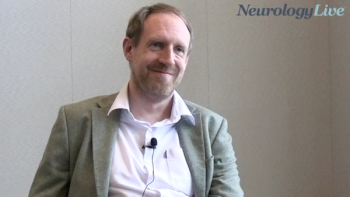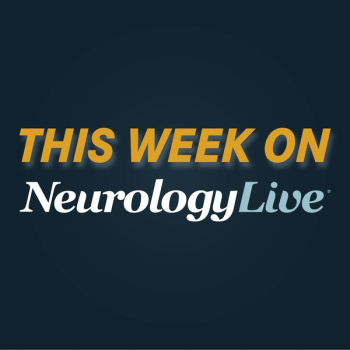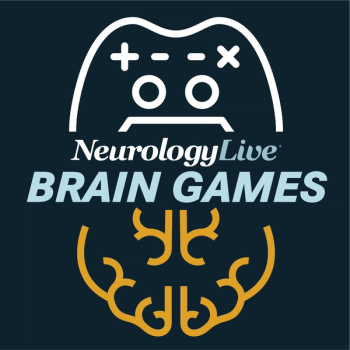
Meta-Analysis Finds Apathy Highly Prevalent Across Lewy Body Dementia Spectrum
Key Takeaways
- Apathy affects over half of individuals with LBD, appearing early in the disease course, including during MCI.
- Despite understanding apathy's neurobiology, effective treatments are lacking, highlighting the need for improved diagnostic tools.
Findings show that apathy affects more than half of individuals with LBD, challenging assumptions that it emerges only in later stages and underscoring the need for targeted screening tools and intervention strategies.
Apathy affects over half of individuals with Lewy body dementia (LBD), and it may be more than just a late symptom, according to a new systematic review and meta-analysis published in Alzheimer’s & Dementia. The findings describe apathy as a pervasive neuropsychiatric symptom that appears not only in advanced stages, but also early in the disease course, including during mild cognitive impairment (MCI).1
Led by Jenny Jia Yu, PhD, Consultant Geriatrician and General Medicine Consultant at the University of Melbourne, the analysis screened 7846 abstracts and included 49 studies with 5113 participants across 4 clinical LBD subtypes: dementia with Lewy bodies (DLB), Parkinson disease dementia (PDD), LBD with MCI (LB-MCI), and Parkinson disease with MCI (PD-MCI). All told, apathy affected 57% of those with DLB (95% CI, 52%–63%), 56% with PDD (95% CI, 43%–70%), 46% with LB-MCI (95% CI, 35%–58%), and 38% with PD-MCI (95% CI, 27%–50%).
"Despite recognition of apathy symptoms and their impact, and an increased understanding of the underlying neurobiology of apathy, there is a lack of currently available, effective treatments for these symptoms in dementia," Yu and colleagues wrote.
To address variations like sample sizes, tools, and diagnostic criteria, the team used a linear mixed random effects model. Although heterogeneity was high (I² > 85%), the consistent presence of apathy supported its presence as a core LBD symptom. The review also noted the lack of MCI-specific diagnostic tools, which may hinder early recognition. Yu and colleagues called for the development of more nuanced tools into apathy’s neurobiological mechanisms and potential treatment responses.
None of the included studies examined the progression of apathy or its impact on functional decline. The authors called for future investigations using validated instruments to better track its development and clinical consequences in LBD.
The meta-analysis cited the diagnostic criteria for apathy in neurocognitive disorders (NCD) that was developed by the International Society for CNS Clinical Trials and Methodology (ISCTM) Apathy Work Group. It defines apathy as a persistent reduction in initiative, interest, or emotional expression that results in functional impairment and cannot be explained by other conditions. Ultimately, these criteria provide a standardized foundation to support clinical assessment, trial design, and therapeutic development.2
In a prior review published in The Journal of Neuropsychiatry and Clinical Neurosciences, findings further emphasized the clinical significance of apathy. Conducted by lead author Robert van Reekum, MD, and colleagues, the review observed apathy as closely tied to dysfunction in the frontal cortex, especially the medial and lateral regions, which govern motivation, initiative, and emotional responsiveness. Authors also noted that the strong association between frontal lobe involvement and apathy could explain its value as a clinical marker in AD, particularly in distinguishing it from normal aging or depression.3
In a 2023 review published in Brain, Le Heron and colleagues proposed that apathy is not merely a symptom but stems from impairments in the brain’s goal-directed behavior system, particularly in frontostriatal circuits responsible for valuing actions and initiating effort. This may explain why apathy emerges so early and persistently in conditions like AD and LBD, where frontal and subcortical degeneration is common. Understanding these mechanisms could help refine clinical assessments and support development of targeted treatments.4
Together, these findings demonstrate the growing importance of recognizing apathy as a defining symptom of both AD and LBD, among other NCDs. Recognizing apathy can potentially help improve diagnosis, caregiver burden, and the development of targeted intervention strategies.
REFERENCES
1.Yu JJ, Chin KS, Loveland PM, Leonid Churilov, Watson R. The prevalence of apathy in Lewy body dementia: A systematic review and meta‐analysis. Alzheimer’s & Dementia. 2025;21(7). doi:https://doi.org/10.1002/alz.70425
2.Miller DS, Robert P, Ereshefsky L, et al. Diagnostic criteria for apathy in neurocognitive disorders. Alzheimer’s & Dementia. 2021;17(12):1892-1904. doi:https://doi.org/10.1002/alz.12358
3.van Reekum R, Stuss DT, Ostrander L. Apathy: Why Care? The Journal of Neuropsychiatry and Clinical Neurosciences. 2005;17(1):7-19. doi:https://doi.org/10.1176/jnp.17.1.7
4.Levy R, Dubois B. Apathy and the Functional Anatomy of the Prefrontal Cortex–Basal Ganglia Circuits. Cerebral Cortex. 2006;16(7):916-928. doi:https://doi.org/10.1093/cercor/bhj043
Newsletter
Keep your finger on the pulse of neurology—subscribe to NeurologyLive for expert interviews, new data, and breakthrough treatment updates.































